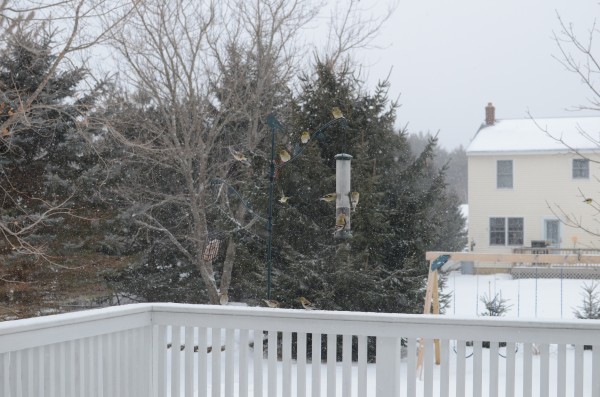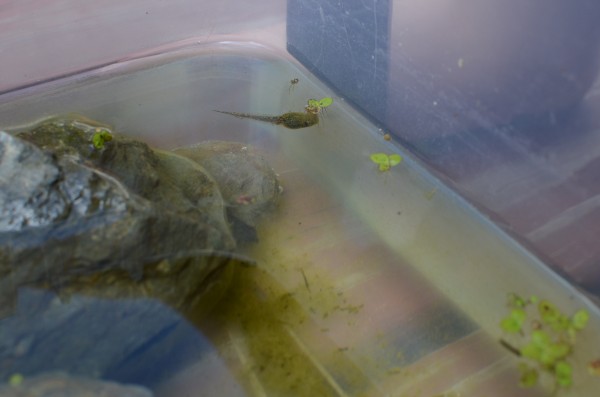Last Child in the Woods ~ Nature in our Homeschool
I’m here with my thoughts on Chapters 15-17 of the book Last Child in the Woods by Richard Louv. I’m participating in a book study hosted by Nicole of Journey to Excellence, be sure to visit her to read her thoughts on these chapters.
Chapter 15 discusses activities that offer a reason and focus for being in nature. Birding and nature journaling were two that we have enjoyed so far. Bird watching is one that my children and I had the pleasure of trying this past winter when we participated in the Great Backyard Bird Count. We prepared by learning about the birds in our area, then over the weekend of the GBBC we enjoyed our roles as scientists tallying birds and submitting our numbers to Cornell University. It occurs in the dead of winter here in Maine and it was great to have a nature-related activity to focus on. Nature journaling is another new-to-us activity mentioned in the book, and we’re all enjoying that through the recommendations of (once again) Barb at the Handbook of Nature Study blog. We often use her notebooking pages for some direction on what to draw. I have found that drawing an item really helps my children pay attention to the details.

At the beginning of Chapter 16 when I read the statement that teachers should free kids from classrooms I said to myself–that’s my whole philosophy behind homeschooling! Not just so they can experience nature, but the world and its people and places. Then on page 211 there was a quote from a teacher: “This isn’t memorizing information for a test…this experience becomes part of you.” Hello! Again, this is the core of homeschooling for me. For me, school was about memorizing information for a test and then promptly forgetting it! I hope to show my kids a different experience.
This chapter discusses many hands-on nature programs and the success of the students in them. I was thrilled because many of the ideas mentioned are happening somewhere in our home right now–square foot gardening in the backyard, caterpillars growing fat on the kitchen counter, and tadpoles just beginning to get their legs on the deck. This is what science is all about for us at the elementary level: things that the kids can see and touch and be amazed at.

The last quote again hit me as a comment on homeschooling in general: “An environment-based education movement–at all levels of education–will help students realize that school isn’t supposed to be a polite form of incarceration, but a portal to the wider world.”
Chapter 17 talks about summer camps being a way to make nature more accessible to kids, and a lot of that discussion wasn’t really relevant for me. For our family, camping together at state parks provides the beneficial experiences and works for us while my kids are fairly young. We aren’t staying in a fancy camper with a bathroom, air-conditioning and television. It’s a pop-up with no plumbing, wooded campsites, and sleeping with the windows open.
I was interested in the author’s discussion of schools spending so much money on soon-to-be-obsolete electronics when they should spend it on natural areas where teachers can take their students to learn with all five senses. Case in point: our town just built a gigantic new high school surrounded by huge parking lots and athletic turf and running tracks. There is no natural area to spend time in, the library is smaller than before, and yet students will receive iPads to use. I also found out the other day that our middle school children have no recess at all. None. Parents were surprised that I thought this was sad! It didn’t seem to bother them that 12 year old kids don’t have time for recess or even 15 minutes of fresh air.
These chapters mark the end of the section of the book with ways to connect your children with nature at home and through their education. The next section is dedicated to ushering in what the author calls the “Fourth Frontier:” reconnecting our society as a whole with nature.
 Hi, I'm Heidi and I homeschool my two sweet kids. I want them to know that learning is an exciting lifelong adventure! We love great books, unit studies, notebooking, lapbooking, and hands-on learning.
Hi, I'm Heidi and I homeschool my two sweet kids. I want them to know that learning is an exciting lifelong adventure! We love great books, unit studies, notebooking, lapbooking, and hands-on learning.



